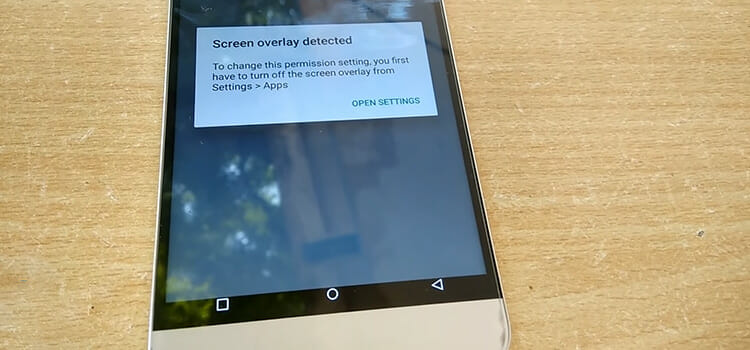What Is Dex2oat Android? A complete walkthrough
In the ever-evolving landscape of mobile app development, there’s a hidden hero working tirelessly behind the scenes to ensure your apps run smoothly on Android devices. It’s called dex2oat, and it plays a pivotal role in optimizing app performance.
In this article, we’ll take a deep dive into the world of dex2oat, exploring its significance and how it contributes to the Android ecosystem. So, fasten your seatbelts as we embark on a journey to unravel the mysteries of dex2oat.

What Does Dex2oat Mean On Android?
To understand dex2oat, we need to break it down. At its core, dex2oat is a compilation tool used in Android that plays a crucial role in optimizing app performance. But what makes it so significant?
Dex2oat is closely related to the Android Runtime, often referred to as ART. It’s part of the compilation process that takes place when you install or update an app on your Android device. While this might sound technical, it’s essential to comprehend how dex2oat fits into the bigger picture of Android app execution.
Contribution Of Dex2oat In Android Compilation
In the not-so-distant past, Android used a different runtime environment called Dalvik, which employed JIT compilation. However, with the transition to ART, Android embraced AOT compilation, and that’s where dex2oat comes into play.
Dex2oat is responsible for converting the Dalvik bytecode of Android apps into machine code. Why does this matter? Because machine code is faster and more efficient, resulting in improved app startup times and runtime performance.
What are The Purpose Of Dex2oat
Imagine your Android device as a library of books, with each book representing an app. These books are written in a language only the library’s staff can understand. Dex2oat acts as the translator, converting these books into a language everyone in the library can read.
In technical terms, it takes the bytecode of Android apps (written in a format that’s easy for developers but not as efficient for execution) and transforms it into native machine code. This transformation enhances the app’s performance, making it load faster and run smoother.
A Complete Explanation of Key Components Of Dex2oat
To grasp how dex2oat operates, let’s examine its key components thoroughly –
The Dex2oat Toolchain
Dex2oat isn’t a standalone tool but part of a broader toolchain used by Android developers. This toolchain includes various utilities, each with its specific purpose. Dex2oat focuses on the compilation aspect, translating bytecode into machine code.
The Role Of The AOT Compiler
The AOT (Ahead-Of-Time) compiler, as the name suggests, compiles code ahead of time, contrasting with JIT compilation, where code is compiled as needed during runtime. Dex2oat embodies this AOT approach, converting the app bytecode before you even launch the app. This AOT compilation is a key factor in improving app performance.
How Dex2oat Works?
Now that we’ve laid the groundwork, let’s dive into the nitty-gritty of how dex2oat works. Understanding this process will give you insights into the magic behind app optimization. Here’s the step-by-step processes of dex2oat –
Step 1: Bytecode Conversion
Dex2oat begins by taking the bytecode of an Android app, which is stored in .dex files, and converts it into Intermediate Representation (IR) format. Think of this as translating a book into a language the translator can work with.
Step 2: Optimization
The IR code goes through a series of optimization passes, where it’s analyzed and modified to make it as efficient as possible. It’s like editing and proofreading a book to make it more readable.
Step 3: Compilation
After optimization, the IR code is compiled into native machine code, which is the language your Android device understands. This is the final step in making the app ready for execution.
The compilation process itself is intricate, involving multiple stages such as parsing, type verification, and code generation. Each stage plays a role in ensuring the app’s bytecode is translated accurately and efficiently.
the Benefits Of Dex2oat
So, why should you care about dex2oat? Here’s why –
- Improved App Performance
The primary benefit of dex2oat is that it significantly improves app performance. By converting bytecode to machine code ahead of time, apps load faster, respond quicker, and use system resources more efficiently. It’s like giving your apps a turbo boost.
- Reduced Runtime Overhead
With bytecode-to-machine code conversion done in advance, there’s less runtime overhead when you launch an app. This means your device can focus on executing the app’s tasks instead of spending time on compilation during runtime. It’s like having a well-prepared meal served instantly rather than waiting for it to cook.
Challenges and Limitations of dex2oat
While dex2oat brings substantial benefits to the Android ecosystem, it’s not without its challenges and limitations.
- Potential Drawbacks Of Dex2oat
One challenge is the increased storage space required for compiled code. Since apps are pre-compiled, they take up more space on your device. However, this trade-off is generally worthwhile for the performance gains.
- Compatibility and Optimization Concerns
Not all apps are created equal, and some may not fully benefit from dex2oat’s optimizations. Compatibility issues can arise when apps use certain features or libraries that don’t align perfectly with the AOT compilation process.
Real-World Applications
To truly understand the impact of dex2oat, let’s explore some real-world examples where this technology has made a noticeable difference –
Case Studies Of Apps Benefiting From Dex2oat
Faster Loading Times: Apps like social media platforms, news aggregators, and e-commerce apps have seen significant improvements in loading times after implementing dex2oat.
Smoother User Experience: Games with complex graphics and animations perform more smoothly thanks to the optimized code generated by dex2oat.
Measurable Improvements in Performance
Across various app categories, users have reported noticeable improvements in performance, including reduced lag, faster response times, and decreased battery consumption.
Future Trends and Developments
As technology continues to advance, it’s essential to look ahead and consider the future of dex2oat and Android compilation.
Predictions For The Evolution Of Dex2oat And Android Compilation
We can anticipate further optimizations and refinements in dex2oat’s compilation process, resulting in even faster app performance.
Potential Innovations In App Optimization
In the ever-evolving world of app development, new techniques and tools may emerge to complement or enhance dex2oat’s capabilities. Stay tuned for exciting innovations.
Final Verdict
In the end, it can be said that dex2oat is the unsung hero behind your favorite Android apps’ exceptional performance. It plays a pivotal role in translating complex code into something your device can understand and execute efficiently. So, the next time you launch an app and marvel at its speed, you’ll know that dex2oat is the wizard behind the curtain, making it all possible. As developers continue to leverage its power, we can look forward to a future where our Android experiences are faster, smoother, and more delightful than ever before. Cheers to dex2oat!
- What Does Dex2oat Mean On Android?
- Contribution Of Dex2oat In Android Compilation
- What are The Purpose Of Dex2oat
- A Complete Explanation of Key Components Of Dex2oat
- How Dex2oat Works?
- the Benefits Of Dex2oat
- Challenges and Limitations of dex2oat
- Real-World Applications
- Future Trends and Developments
- Final Verdict
Subscribe to our newsletter
& plug into
the world of technology





